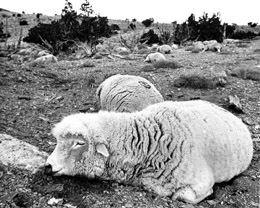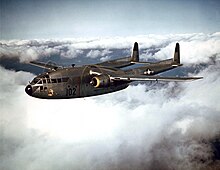
Biological agents, also known as biological weapons or bioweapons, are pathogens used as weapons. In addition to these living or replicating pathogens, toxins and biotoxins are also included among the bio-agents. More than 1,200 different kinds of potentially weaponizable bio-agents have been described and studied to date.

Cadmium sulfide is the inorganic compound with the formula CdS. Cadmium sulfide is a yellow salt. It occurs in nature with two different crystal structures as the rare minerals greenockite and hawleyite, but is more prevalent as an impurity substituent in the similarly structured zinc ores sphalerite and wurtzite, which are the major economic sources of cadmium. As a compound that is easy to isolate and purify, it is the principal source of cadmium for all commercial applications. Its vivid yellow color led to its adoption as a pigment for the yellow paint "cadmium yellow" in the 1800s.
The United States biological weapons program officially began in spring 1943 on orders from U.S. President Franklin D. Roosevelt. Research continued following World War II as the U.S. built up a large stockpile of biological agents and weapons. Over the course of its 27-year history, the program weaponized and stockpiled seven bio-agents — Bacillus anthracis (anthrax), Francisella tularensis (tularemia), Brucella spp (brucellosis), Coxiella burnetii (Q-fever), Venezuelan equine encephalitis virus, Botulinum toxin (botulism), and Staphylococcal enterotoxin B. The US also pursued basic research on many more bio-agents. Throughout its history, the U.S. bioweapons program was secret. It was later revealed that laboratory and field testing had been common. The official policy of the United States was first to deter the use of bio-weapons against U.S. forces and secondarily to retaliate if deterrence failed.

USS Tercel (AM-386) was an Auk-class minesweeper acquired by the United States Navy for the dangerous task of removing mines from minefields laid in the water to prevent ships from passing.

The Dugway sheep incident, also known as the Skull Valley sheep kill, was a March 1968 sheep kill that has been connected to United States Army chemical and biological warfare programs at Dugway Proving Ground in Utah. Six thousand sheep were killed on ranches near the base, and the popular explanation blamed Army testing of chemical weapons for the incident, though alternative explanations have been offered. A report, commissioned by Air Force Press Officer Jesse Stay and first made public in 1998, was called the "first documented admission" from the Army that a nerve agent killed the sheep at Skull Valley.

Project 112 was a biological and chemical weapon experimentation project conducted by the United States Department of Defense from 1962 to 1973.
The M143 bomblet was a biological cluster bomb sub-munition developed by the United States during the 1960s. The spherical bomblet was the biological version of the Sarin-filled M139 chemical bomblet.

The Deseret Test Center was a U.S. Army operated command in charge for testing chemical and biological weapons during the 1960s. The Deseret was headquartered at Fort Douglas, Utah, a former U.S. Army base.
Zinc cadmium sulfide is a mixture of zinc sulfide (ZnS) and cadmium sulfide (CdS). It is used for its fluorescent properties. Bioaccumulation of this chemical may occur along the food chain, for example in plants and in seafood. Long-term or repeated exposures are expected to have harmful effects on the kidneys, bones, and respiratory tract, resulting in kidney impairment, osteoporosis, and chronic inflammation of the respiratory tract.

Operation Big Itch was a U.S. entomological warfare field test using uninfected fleas to determine their coverage and survivability as a vector for biological agents. The tests were conducted at Dugway Proving Ground in 1954.
The E48 particulate bomb was a U.S. biological sub-munition designed during the 1950s for use with the E96 cluster bomb.
Operation Dew refers to two separate field trials conducted by the United States in the 1950s. The tests were designed to study the behavior of aerosol-released biological agents.
Operation Polka Dot was a U.S. Army test of a biological cluster bomb during the early 1950s.

Horn Island Chemical Warfare Service Quarantine Station, also known as the Horn Island Testing Station, was a U.S. biological weapons testing site during World War II. It was located on Mississippi's Horn Island and opened in 1943. When the war ended, the facility was closed.
Operation Night Train was part of a series of chemical and biological warfare tests overseen by the Deseret Test Center as part of Project 112. The test was conducted near Fort Greely, Alaska from November 1963 to January 1964. The primary purpose of Night Train was to study the penetration of an arctic inversion by a biological aerosol cloud. The test's first purpose was to study the downwind travel and diffusion of this cloud when disseminated into different arctic meteorological regimes. All documents about Night Train were considered classified by the US military until 2002, when the Department of Defense (DOD) released medically relevant information of all the chemical and biological warfare agent tests conducted under Project 112.
The Dorset Biological Warfare Experiments were a series of experiments conducted between 1953 and 1975 to determine the extent to which a single ship or aircraft could dispense biological warfare agents over the United Kingdom. The tests between 1971 and 1975 were known as the DICE trials. The tests were conducted by scientists from Porton Down, initially using zinc cadmium sulfide (ZnCdS) as a simulated agent. Early results clearly showed that one aircraft flying along the coast while spraying its agent could contaminate a target over 100 miles away, over an area of 10,000 square miles. This method of biological warfare attack and the test program to study it was known as the Large Area Coverage (LAC) concept.
Operation Sea-Spray was a 1950 U.S. Navy secret biological warfare experiment in which Serratia marcescens and Bacillus globigii bacteria were sprayed over the San Francisco Bay Area in California, in order to determine how vulnerable a city like San Francisco may be to a bioweapon attack, killing at least one American and sickening at least 10 more.
Anthrax weaponization is the development and deployment of the bacterium Bacillus anthracis or, more commonly, its spore, as a biological weapon. As a biological weapon, anthrax has been used in biowarfare and bioterrorism since 1914. However, in 1975, the Biological Weapons Convention prohibited the "development, production and stockpiling" of biological weapons. It has since been used in bioterrorism.







